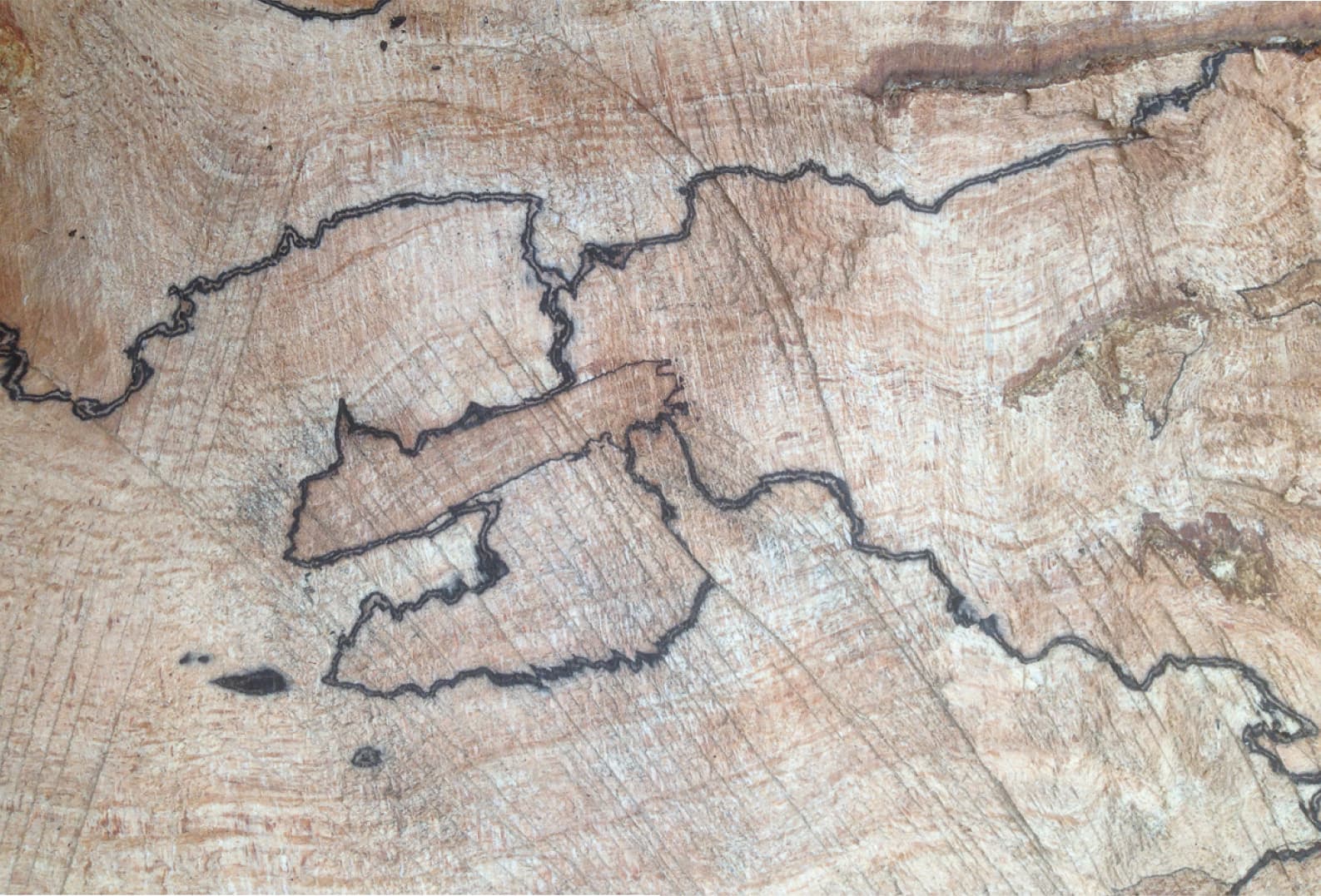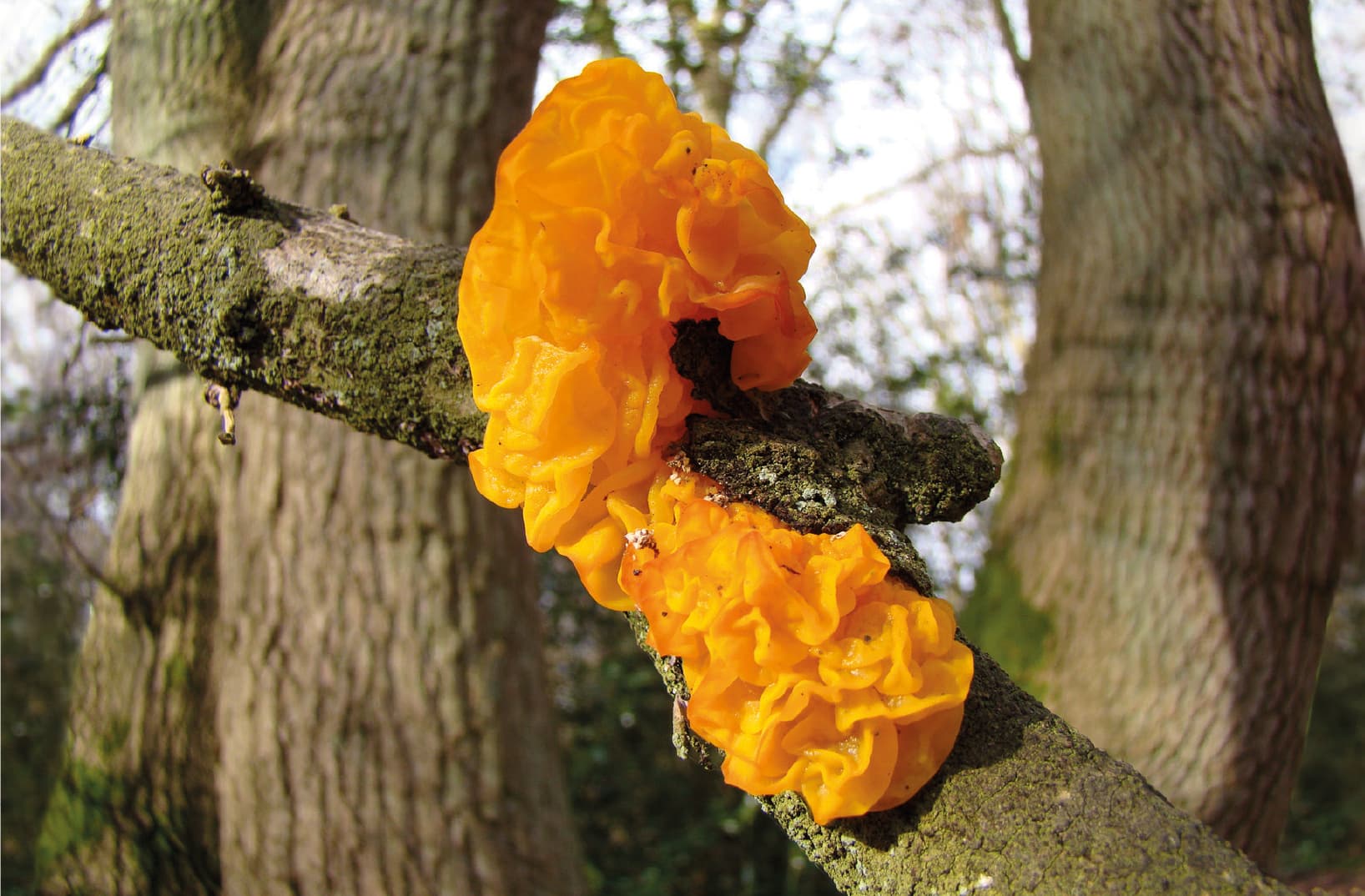Understanding relationships between trees and fungi
A review of the Association’s fungi books
Andrew Hirons
As arboriculturists, if we are to understand trees, then we must also strive to understand their relationship with fungi. These two organisms are intrinsically linked, and their fascinating interactions merit the attention of all those engaged with the management of trees.
Two new books, published by the Association – Fungi and Trees: Their Complex Relationships by Lynne Boddy and Fungi on Trees: A Photographic Reference by David Humphries and Christopher Wright – will undoubtedly make a huge contribution to our collective understanding of fungi and their relationships with trees.
Fungi and Trees: Their Complex Relationships starts by introducing the reader to fungi. The major fungal phyla, major types of fungal nutrition, the fundamental components of the fungal body and their life-cycle are all introduced. As with any scientific discipline, there is an abundance of vocabulary that needs to be employed simply to communicate these topics precisely. Those looking to increase their Scrabble scores will certainly find inspiration in this chapter. More seriously though, new terms are explained in an accessible way and the written commentary is very well supported with figures that further clarify and enhance understanding. The chapter lays down the foundation on which the rest of the book builds.
I think one of the most important contributions this book makes is that it totally dismantles any notion that trees exist in isolation from other organisms. The second chapter starts with introducing the tree holobiont, reinforcing the fact that a tree is never just a tree as it lives in concert with a wide array of fungi and other organisms. This chapter continues to be an engaging and well-illustrated account of the fundamental components of trees – leaves, roots and wood. I particularly enjoyed the time series of oak trees, and the many other ancient trees portrayed. Unfortunately, I did spot a few minor editing errors in table 2.4 that suggests Norway spruce is diffuse porous (it is non-porous) and horse chestnut and sycamore are ring porous (they are diffuse porous). Also, the legend of figure 2.18 suggests Abies alba has vessels, when it only has tracheids. It’s probably worth correcting these minor issues for a reprint.

Interaction zone lines in wood, between different individuals of Kretzschmaria deusta (brittle cinder fungus). (Photo: Lynne Boddy, from Fungi and Trees: Their Complex Relationships)
Chapter 3 looks at the beneficial relationships with fungi, focusing on the mycorrhizas, the nature of their associations and their symbiosis. The section on managing mycorrhizas will be of particular relevance to readers seeking to enhance these beneficial relationships through tree care practices. Furthermore, it raises the important considerations of compatibility and provenance of mycorrhizal inoculum – something that has been given too little attention in the past. The prospect of ‘designer inoculum’ is tantalising though and, should we get there, would certainly help us to augment these important relationships in a more effective and sustainable way.
The acute relevance of this book is brought into sharp focus in chapter 4 which examines fungi that harm trees. I found the systematic approach reviewing the major types of tree disease very helpful: foliar diseases, witch’s broom, cankers and dieback (including ash dieback), root and butt rots, vascular wilts and oomycete diseases. Important examples are given for each class of disease and the text, combined with the tables and figures, continuously provides insights and contemporary understanding.
For me chapter 5 was a real voyage of discovery. It focuses on the interactions of tree-associated fungi with other organisms. Fungal antagonism, mycoparasitism and interactions between fungi and bacteria, viruses, invertebrates and vertebrates are all covered.
Despite the vast diversity of trees and fungi, there are some broad classes of decay that are recognised: white rots, brown rots and soft rots. These are explored in chapter 6, together with some of the factors that affect the rate of decay and practical approaches that allow arboriculturists to evaluate the extent of decay. At the end of the chapter there are a series of case studies on fungal community development. These are particularly interesting and serve to reinforce early sections on the interactions of fungi.
One of the highly refreshing things about this book is the ecological prism through which the relationship between trees and fungi is presented. I am quite sure that this was one of the central intentions of Professor Boddy and I couldn’t help but raise a smile at her observation that heart-rot was a ‘forester’s problem’. This is absolutely true, of course. For trees, the decay of their older, central core has immense value as nutrients, previously locked up in wood, once again become available to the tree. Both the process by which tree hollows are formed and the extraordinary diversity of life that hollows in trees host are the subject of chapter 7.
I was very interested in chapter 8 on sapwood decay in living trees. This has particular relevance to arboriculturists that regularly prune (wound) trees. I am also sure that readers who have grown up on a diet of Shigo will be challenged by the commentary that critically reflects on the traditional presentation of the CODIT model. Again, the complex process of fungal colonisation is articulated with great clarity, despite its complex nature.
The final two chapters on environmental change and conservation provide some interesting examples of how a changing climate may affect (is affecting) the relationship between trees and fungi, as well as some of the more promising management techniques that can be employed to conserve our wonderfully diverse fungal communities.
Overall, this is a superb contribution to the arboricultural and mycological literature. The text is written with insight and there is an abundance of illustrations that greatly enrich the commentary. Undoubtedly, Fungi and Trees is the fruit of passion, commitment and expertise forged from decades of hard work in the laboratory and the field. I do not think that there is an arboriculturist anywhere in the world that would not learn a great deal from the careful study of this book and I am quite sure that it will be essential reading on any contemporary arboricultural curriculum.
Fungi on Trees: A Photographic Reference is a fantastic companion text to Fungi and Trees as well as being an excellent book in its own right. Its aim is to provide the necessary information to assist with the identification of a (fungal) species found within the British Isles and adjacent regions. Unlike many other fungi books, this is written by arboriculturists for arboriculturists and herein lies one of its core strengths. I believe that this gives the book a strong sense of utility and purpose.

Tremella mesenterica. (Photo: David Humphries, from Fungi on Trees: A Photographic Reference)
The book is split into three parts: understanding fungi, identifying fungi and species biographies. There is no doubt that the reader is given the framework that they need to develop their knowledge and expertise in fungal identification. As someone with fairly limited expertise in fungal identification, I found the chapter on identifying fungi hugely helpful. The high-quality photos and concise commentary that illustrate the different fruit body forms are very accessible. There is also some practical advice for those that would like to photograph fungi, if you are inspired to start your own photographic reference. Valuable guidance on examining fruit flesh and spores is also found in this section (Part 2).
The bulk of the book and real value of the book are the 100 extensively illustrated species biographies. These biographies (probably better termed ‘profiles’) are organised into perennial or annual fungi and then further by fruit body type. Each biography has a short description, indicates the area affected, the significance (effect and impact), similar species and synonyms. Combined with multiple images, the biographies will help build confidence and, over time, expertise in fungal identification.
The generosity of images means that you never just have one image to work with. You get a sense for the nuanced way in which fungal fruiting structures can present. This has huge practical value.
I can only imagine the hours that it must have taken David and Christopher to track down and photograph all these species. Such commitment and willingness to share are admirable and hugely appreciated. Thank you.
This photographic guide will become the new standard for arboriculturists and will undoubtedly inspire and inform in equal measure.
I congratulate the Arboricultural Association for their commitment to producing such relevant high-quality and good-value texts.
Dr Andrew Hirons is a Senior Lecturer in Arboriculture and Urban Forestry at University Centre Myerscough. He is the co-author, with Dr Peter A. Thomas, of Applied Tree Biology (Chichester: Wiley Blackwell, 2018)
This article was taken from Issue 194 Autumn 2021 of the ARB Magazine, which is available to view free to members by simply logging in to the website and viewing your profile area.